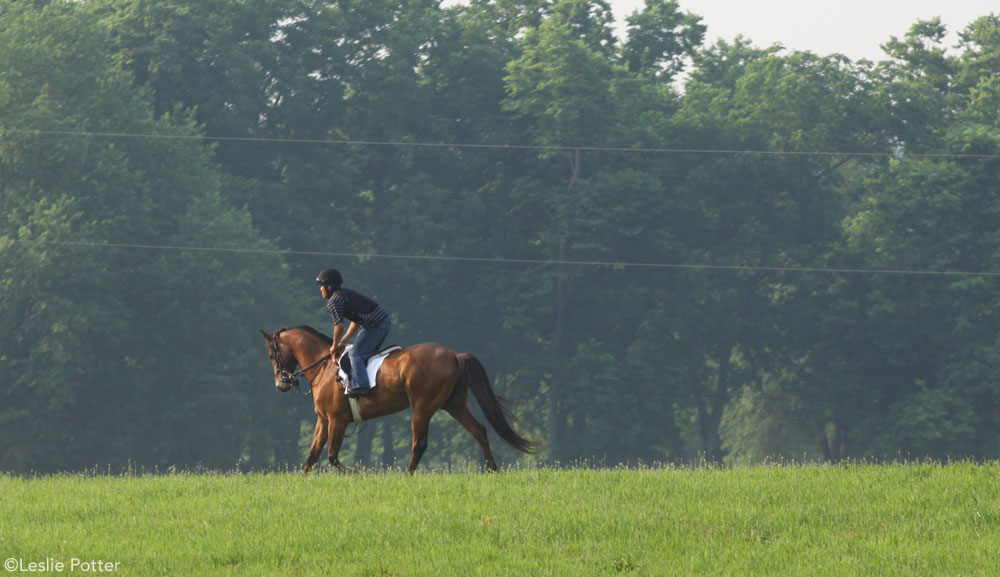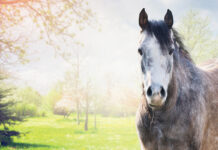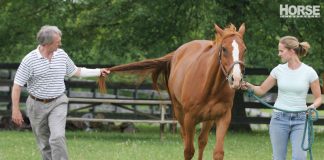In our Ask the Vet column, Dr. Lydia Gray answers your horse-health questions at HorseChannel.com/AskTheVet. Got a question for Dr. Gray? Send it to hc-editor@luminamedia.com and use subject line “Ask the Vet.”

Roaring is fairly common in Thoroughbreds, but isn’t exclusive to the breed.
Q: Can you explain partial vocal cord paralysis? Is a horse still rideable with it?
A: I think what you may be referring to is also known as “roaring” or by its technical name “left recurrent laryngeal hemiplegia.” In basic terms, the nerve controlling the cartilage on the left side of the throat is damaged, allowing the cartilage to hang or droop into the airway. This results in poor athletic performance, a characteristic whistling or roaring sound during exercise, and even an unusual whinny. While roaring can be caused by direct trauma, a misplaced injection, or a toxic substance, it is generally considered an inherited disorder. Three to five percent of Thoroughbreds have laryngeal hemiplegia, which is also seen in Standardbreds and larger (greater than 17 hands) horses of any breed.
Hopefully your veterinarian has been involved in diagnosing this condition, which is confirmed through endoscopy (inserting a long, flexible tube with a camera through the nose into the airway). However, since the condition doesn’t always show up at rest, this may require “scoping” while the horse is exercised on a treadmill or by using a portable endoscope while riding or driving. Surgery is currently the only method of treatment, and while several alternatives exist, the laryngoplasty or “tie back” is considered the Gold Standard.
To answer your second question, the prognosis for a full return to the previous level of athletic performance is good, although there can be complications from the surgery such as a chronic cough, chronic aspiration (inhaling) of feed, infection, or failure of the sutures used to permanently tie back the cartilage. Researchers are exploring the use of electroacupuncture as a non-surgical treatment for roaring. In the meantime, antioxidants that specifically target respiratory tissue – such as vitamin C and N-acetyl cysteine may be helpful.







